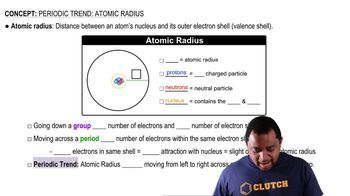Textbook Question
Explain why graphite/epoxy composites are good materials for making tennis rackets and golf clubs.
 Verified step by step guidance
Verified step by step guidance



A cube-shaped crystal of an alkali metal, 1.62 mm on an edge, was vaporized in a 500.0 mL evacuated flask. The resulting vapor pressure was 12.5 mm Hg at 802 °C. The structure of the solid metal is known to be body-centered cubic. (b) Use the data in Figure 5.19 to identify the alkali metal.
A cube-shaped crystal of an alkali metal, 1.62 mm on an edge, was vaporized in a 500.0 mL evacuated flask. The resulting vapor pressure was 12.5 mm Hg at 802 °C. The structure of the solid metal is known to be body-centered cubic. (c) What are the densities of the solid and the vapor in g>cm3?